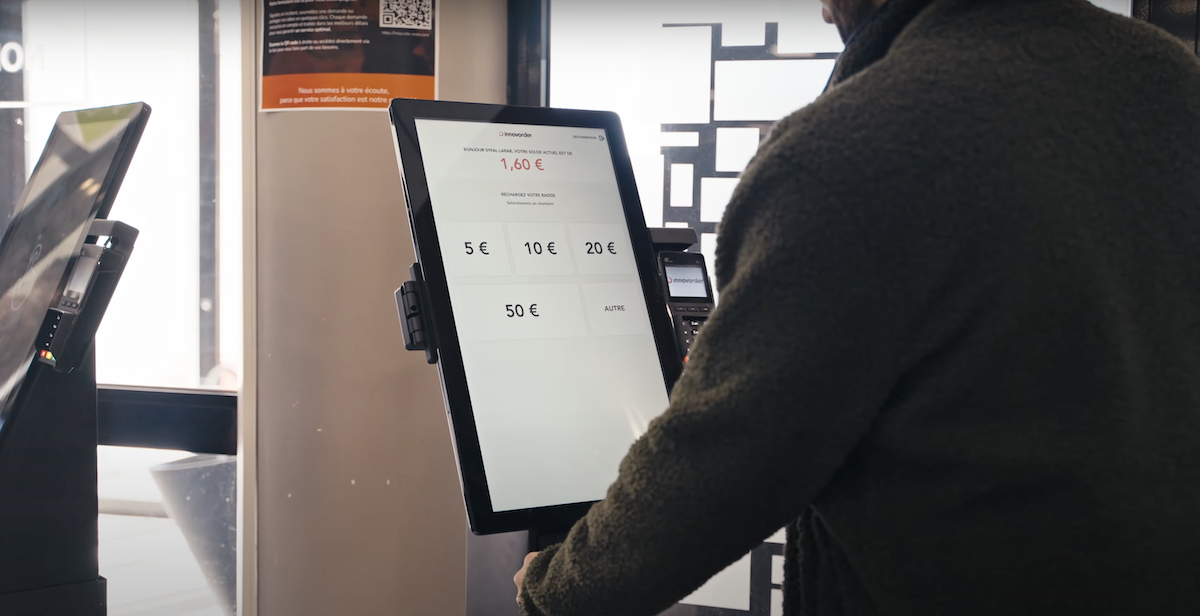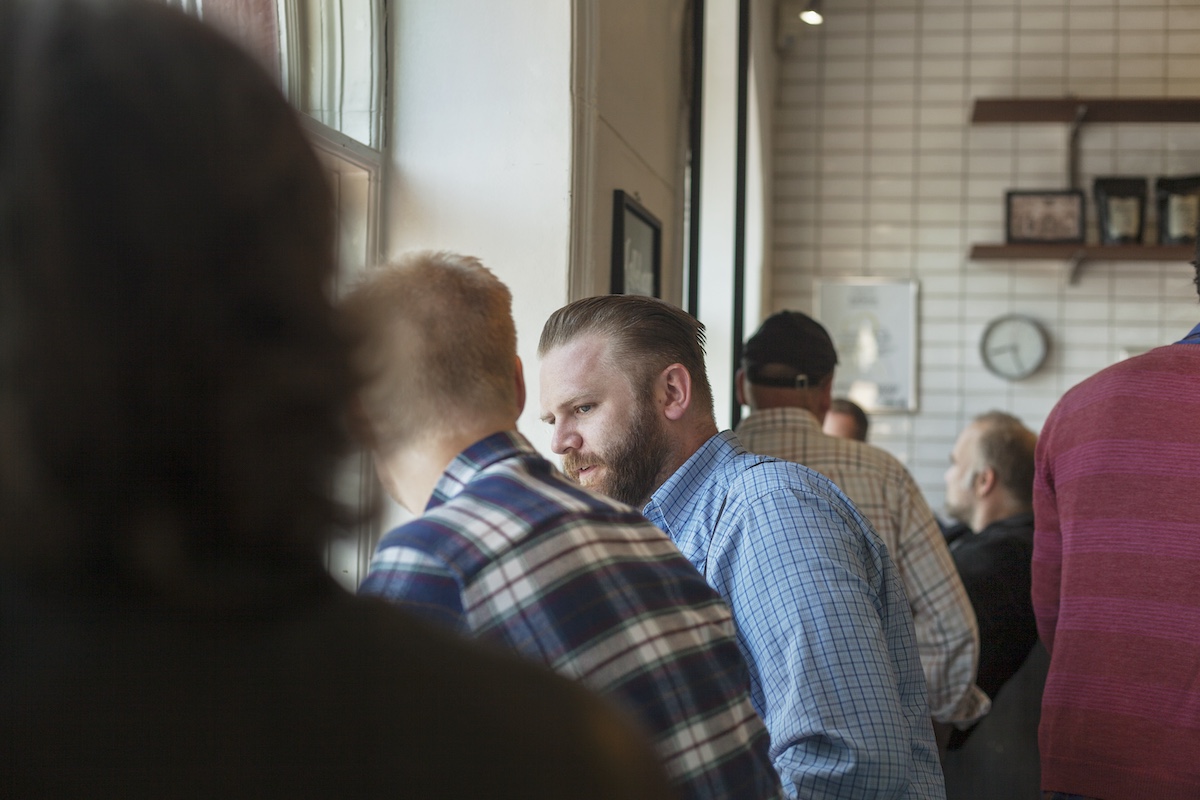Do you run a company restaurant, a school canteen or a hospital cafeteria? You're undoubtedly faced with the same challenges: long queues, complex flow management, special diets, ordering errors and so on. We've got good news for you: there's a simple, effective solution to these problems: the order terminal for collective catering.
Not only does this system enable you to streamline routes, it also enhances the guest experience, eases the burden on staff and optimizes day-to-day management.
Here are 7 concrete use cases that illustrate the added value of this digital solution in foodservice.
1. Reduce queues and optimize traffic flow
In the foodservice sector, managing the flow of food can be a complicated business. At peak times, waiting times often reach several minutes, creating frustration among diners and tension among teams. Nothing positive, then.
The installation of touchscreen kiosks enables orders to be distributed over several points, and even orders to be taken in advance of arrival at the self-service restaurant. The result is smoother checkouts, shorter queues and a more pleasant experience for all concerned.
In a company restaurant, for example, if kiosks are installed at the entrance, employees can order as soon as they arrive on site. All they have to do is pick up their tray, which considerably reduces service time.

2. Easily manage diets and customize meals
Vegetarian, gluten-free, lactose-free, pork-free - there are many dietary constraints today. And yet, it's crucial to continue satisfying all our customers, whether in schools, hospitals or the medical-social sector.
Using an order terminal, guests can select their own dietary preferences and restrictions. The system then automatically adapts the suggested dishes, offering only those that correspond to the criteria defined by the guest.
This level of personalization enhances guest satisfaction, while making service more secure. For our teams, this means less stress, fewer errors and optimized service.
3. Reduce ordering errors and food waste
Ordering errors are a major source of waste and tension in the catering industry. A miscommunication between guest and staff, a dish served by mistake, a forgotten side dish, and a tray comes back to the kitchen. Often, the tray ends up in the garbage can.
By digitizing the ordering process, information flows directly from the guest to the kitchen, with no intermediaries. The guest himself selects his meal, and the data is transmitted in real time to the preparation team.
The result: fewer errors, fewer returns and therefore less food waste. For restaurateurs, it's also a way to better control your raw material costs and ensure better traceability of your products.
👉 To find out more : How can you free up time for your catering teams?
4. Manage complex pricing automatically
One of the challenges of collective catering is the multiplicity of pricing structures. Prices can vary depending on the customer's profile (employees, students, guests, beneficiaries). Managing this manually, at the cash desk, increases the risk of errors or dissatisfaction.
Here again, control terminals can help. They integrate this pricing logic. By logging in with a badge, card or QR code, each guest is automatically charged the appropriate rate. This automation avoids any risk of conflict, and ensures a smoother passage.
It's a real time-saver for teams, but also provides security for the establishment, particularly in the event of an audit or inspection.
5. Increase average shopping basket through additional sales
It's never easy to offer a dessert, a drink or a complete package at the checkout, in a tense or timed environment. The kiosks, on the other hand, do it automatically and without pressure.
They can suggest additional products based on the initial order, the time of day or the guest's preferences. These additional sales are generally synonymous with increased sales.
Another effective lever is to integrate a loyalty program into the kiosk: points accumulation, exclusive offers, favorite menus, etc. These are just some of the ways to increase guest commitment and loyalty, without adding to the workload of your teams.

6. Better manage your business with data
Every time a kiosk is used, data is generated that can be used in real time: number of diners served, favorite dishes, busy times, volume of orders per distribution point, etc.
With a connected catering software, this information can prove invaluable. You can use it, for example, to :
- Adjust your menus according to the most popular dishes,
- Anticipate the volumes to be prepared for peak periods ,
- Optimize supplier orders through better stock monitoring,
- Adapt staff schedules according to observed flows,
- Detect deviations or anomalies to improve service quality.
It's also an excellent way of tracking changes in guest satisfaction over time, and quickly identifying sticking points.
A kiosk well integrated into your digital ecosystem becomes much more than an ordering or payment tool: it becomes a real management tool for your business.
👉 Going further : 15 innovations to transform your collective restaurant

7. Use the terminal as a badge reloading point
Inmany establishments, guests use a badge to identify themselves, pay for their meal or access certain services. The problem? Reloading these badges is often manual, slow and a source of extra queuing.
A control terminal can also fulfil this function.
In addition to taking orders, it can also be used as a reloading point for user badges or cards.
In concrete terms, this means that guests can top up their accounts directly from the kiosk, using their bank card or other integrated means of payment. This eliminates the need for a dedicated checkout, further streamlining flows and offering a truly autonomous experience.
For the establishment, this means less administrative management and better continuity of service, especially in busy environments such as high schools and hospitals.
After reading this article, it's clear that the order terminal for collective catering is a major asset in meeting very specific challenges: waiting, personalization, sales and management. Another positive point is that it can be adapted to the specific needs of each establishment, whether it's a large company, a high school or a hospital.
-
How about upgrading your catering service with an order terminal tailored to your needs? Contact one of our experts to discuss your requirements.







